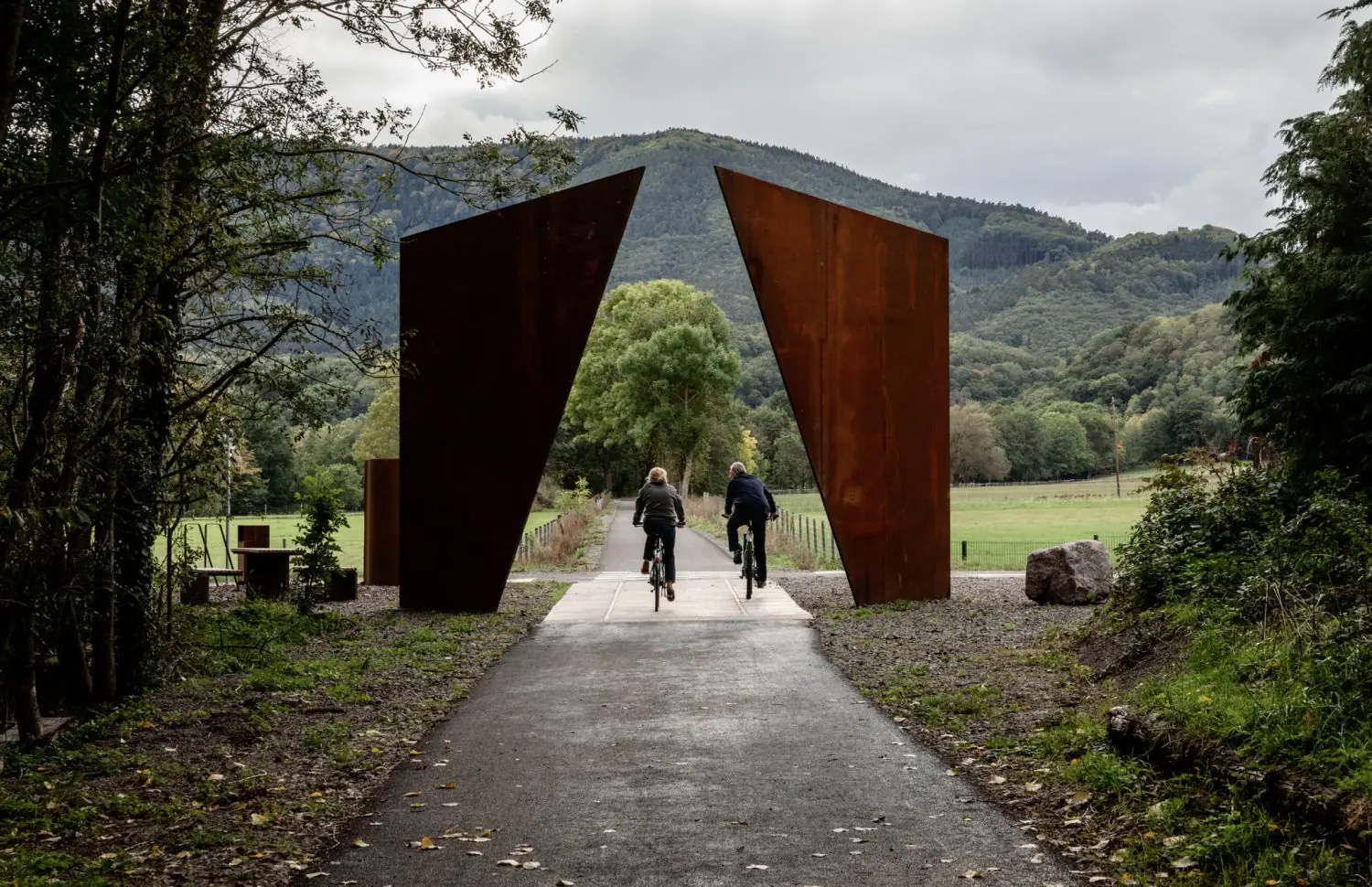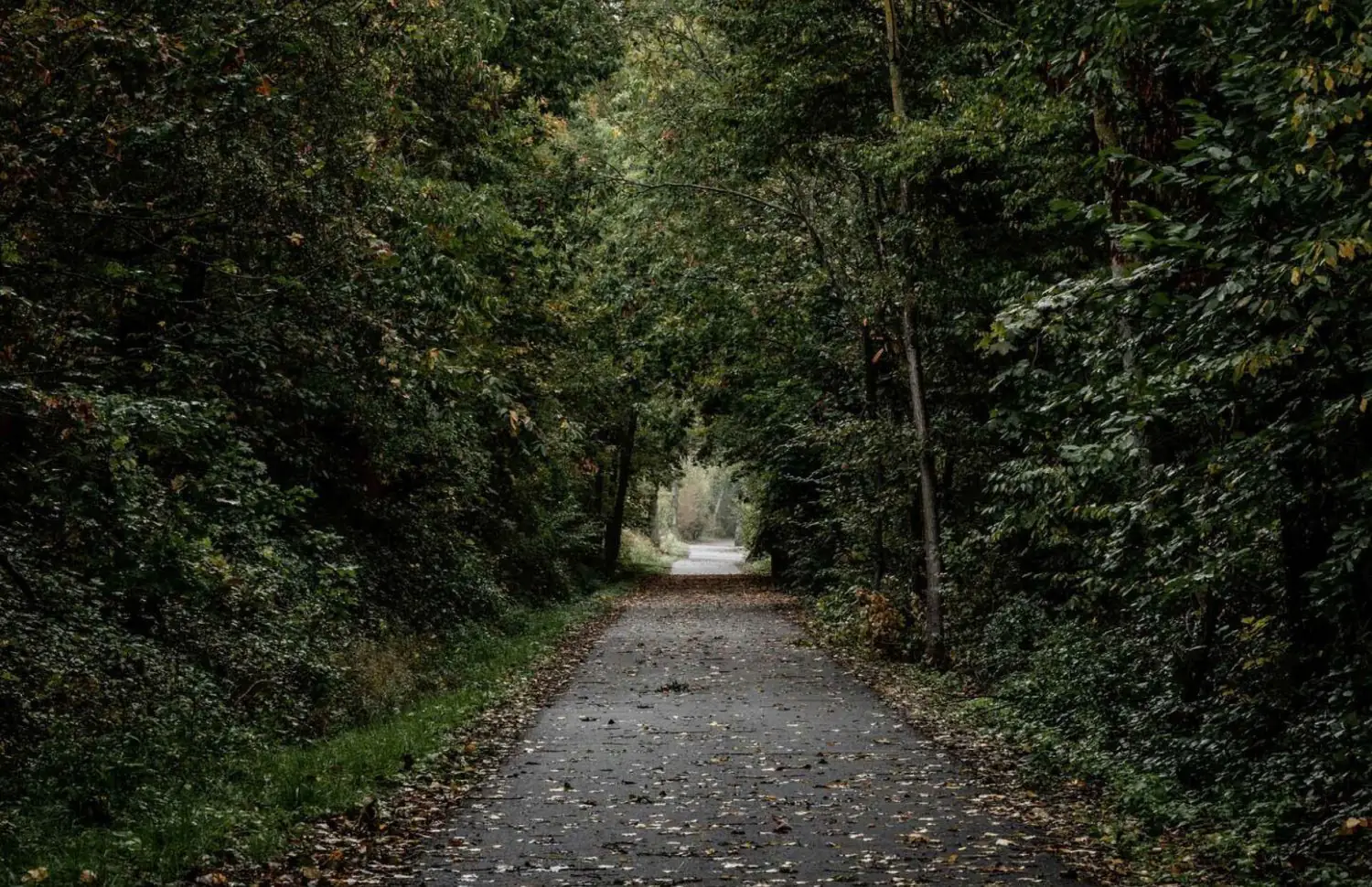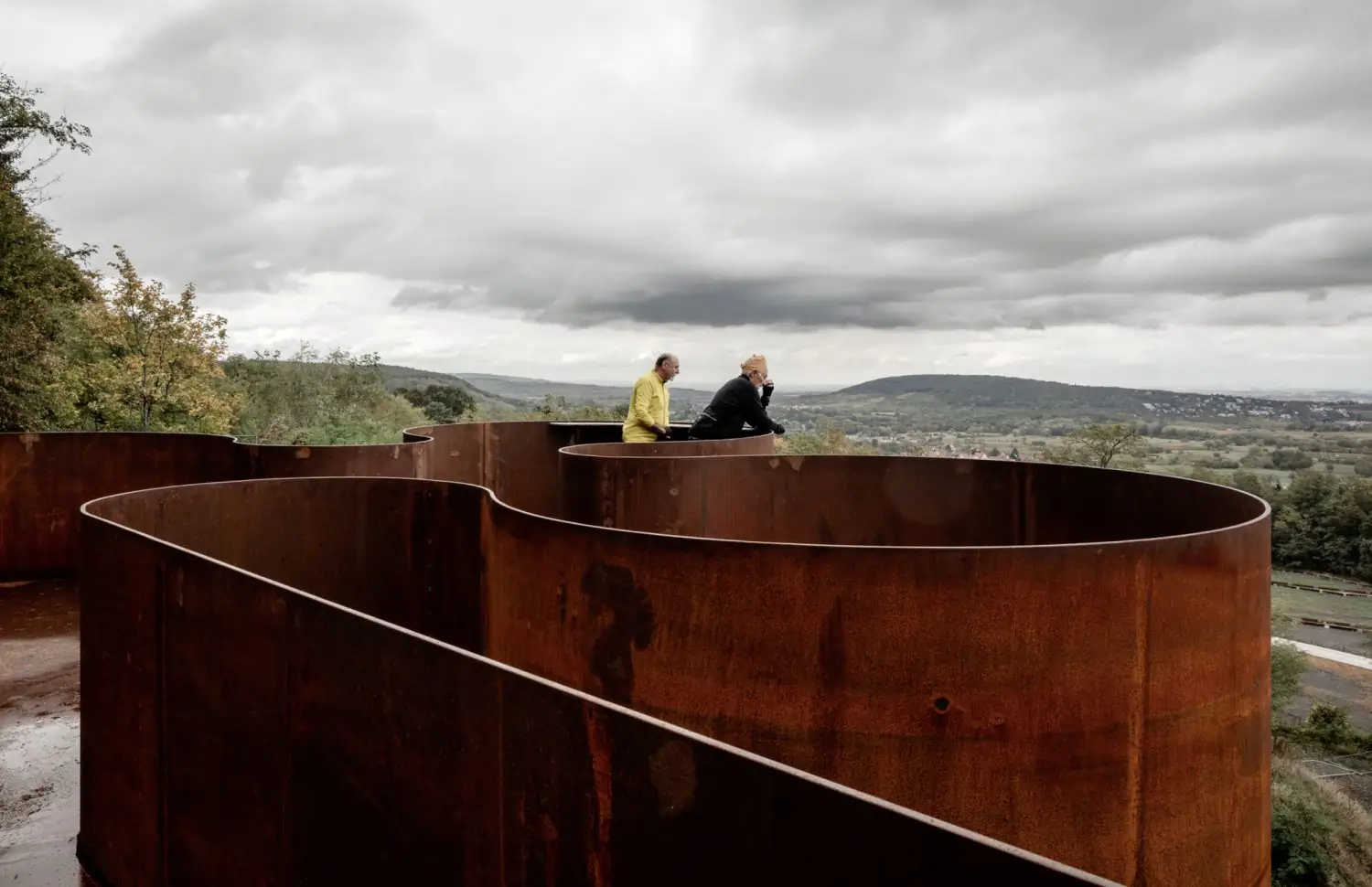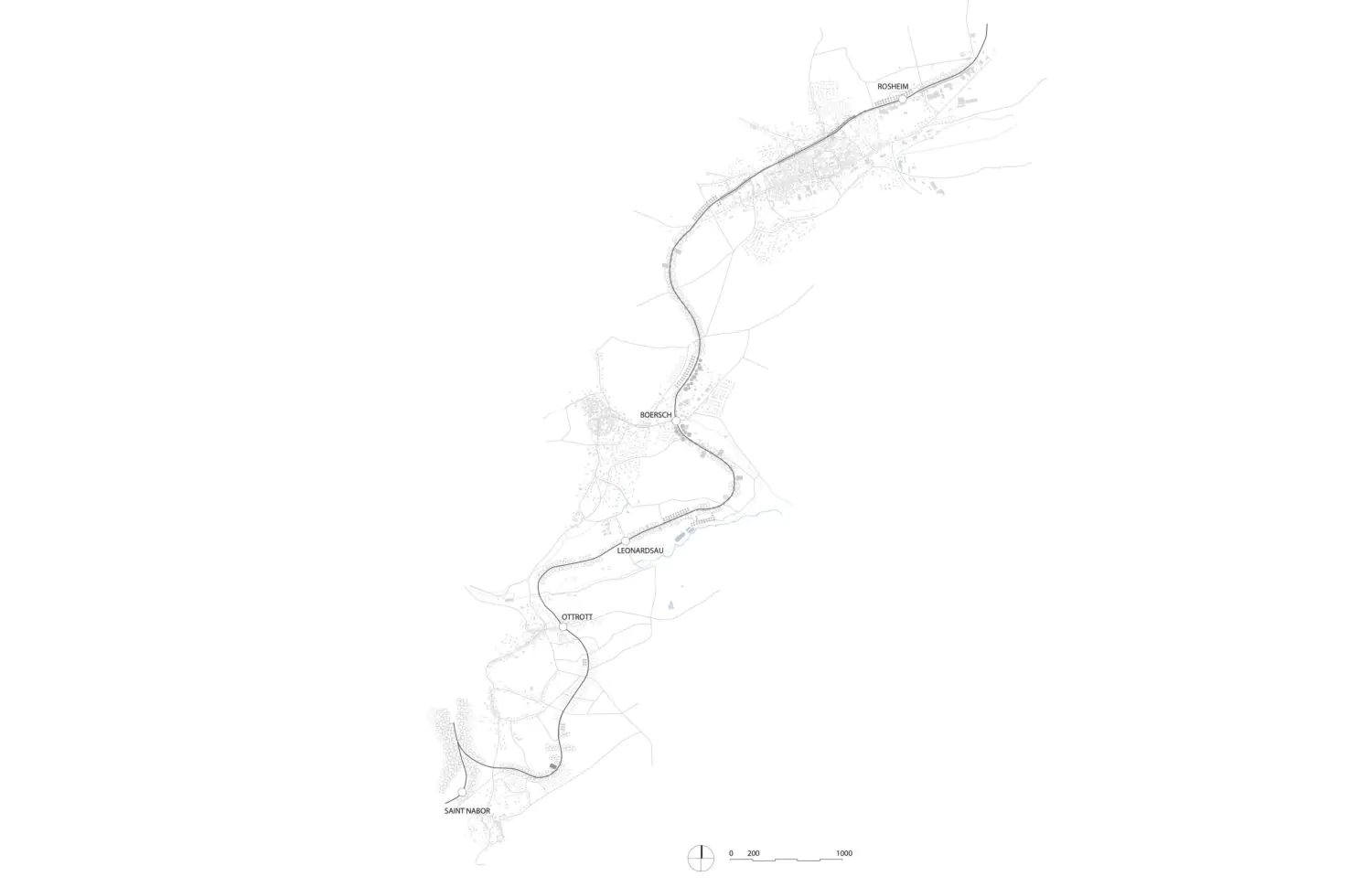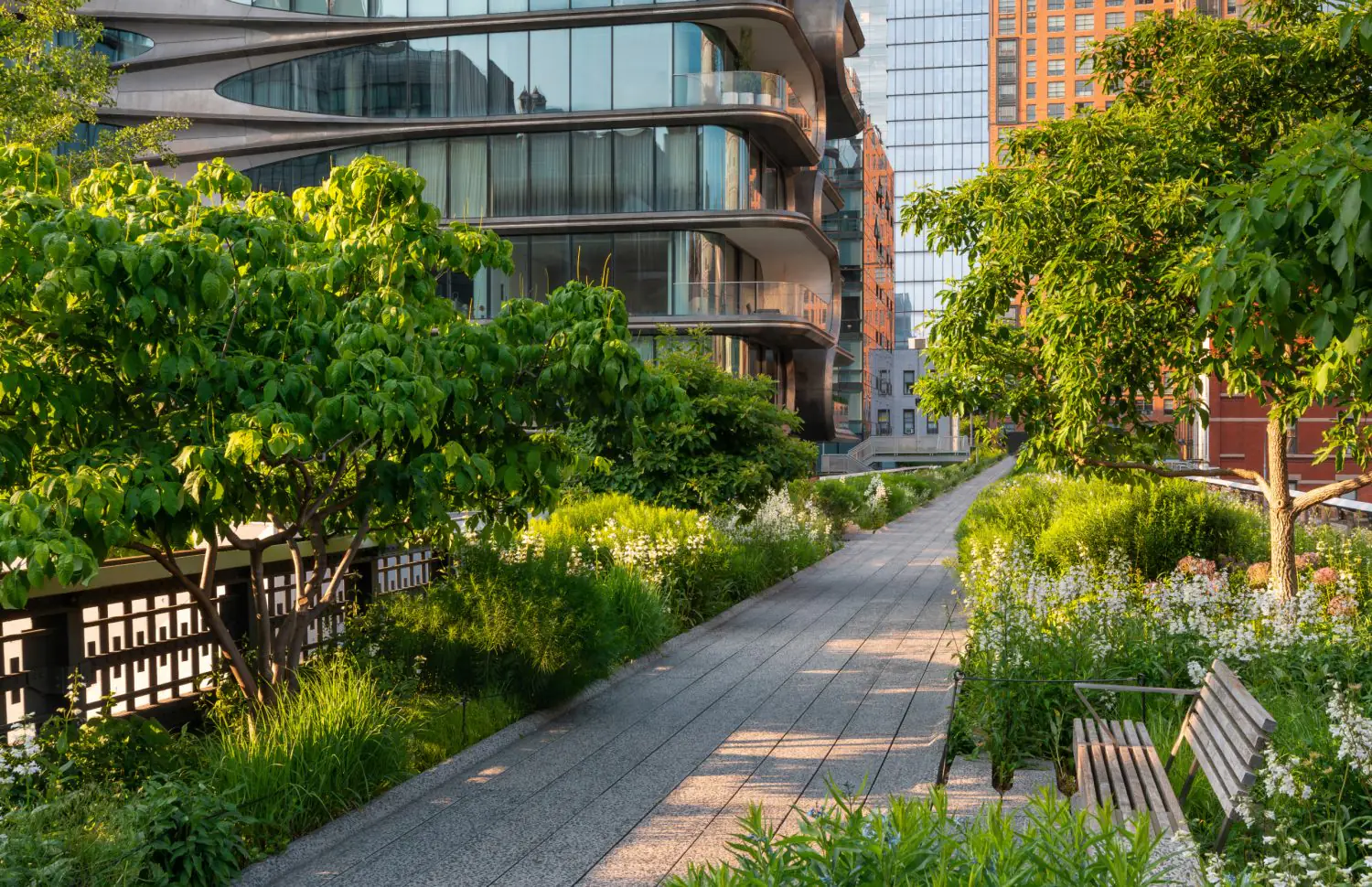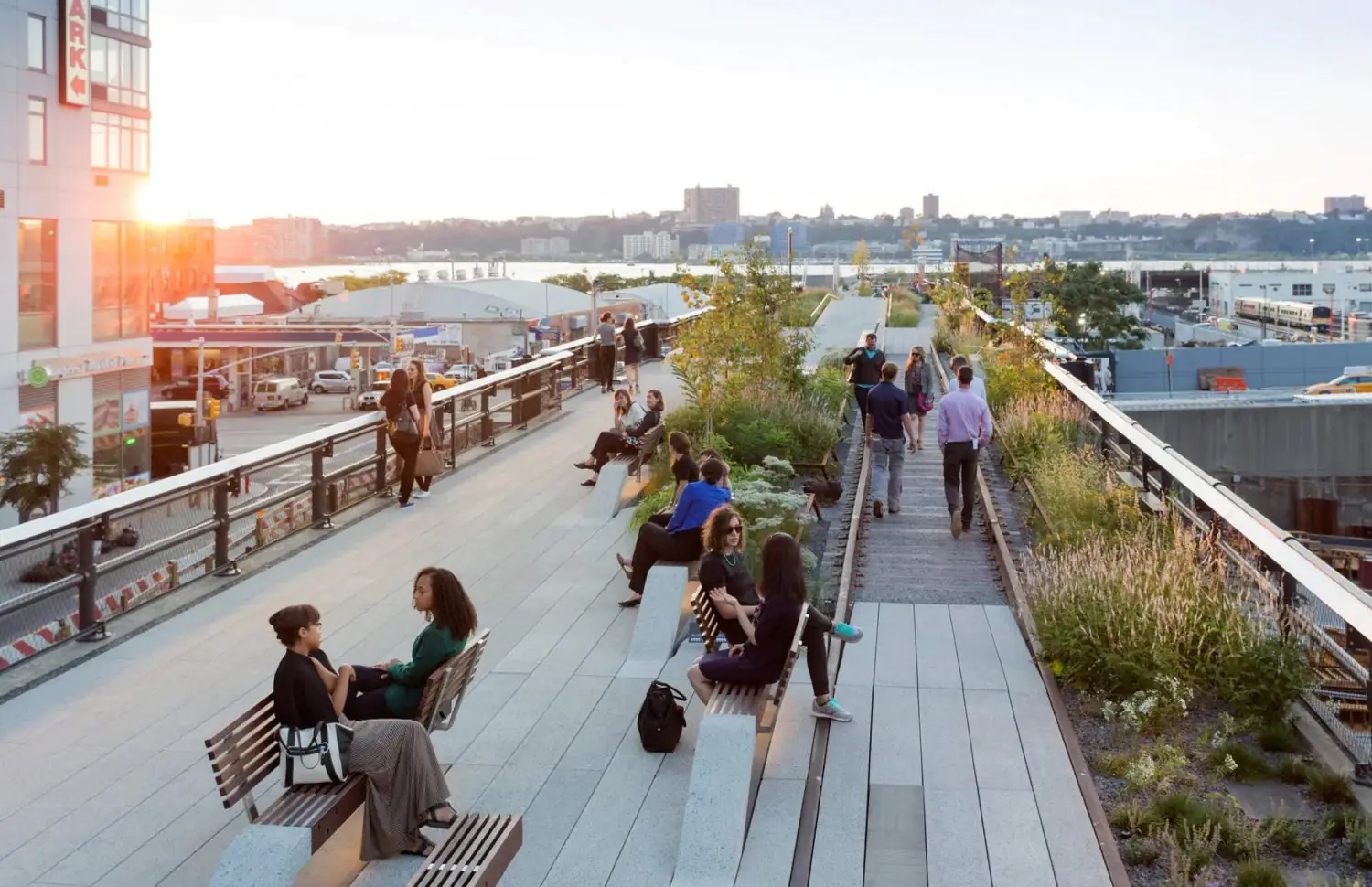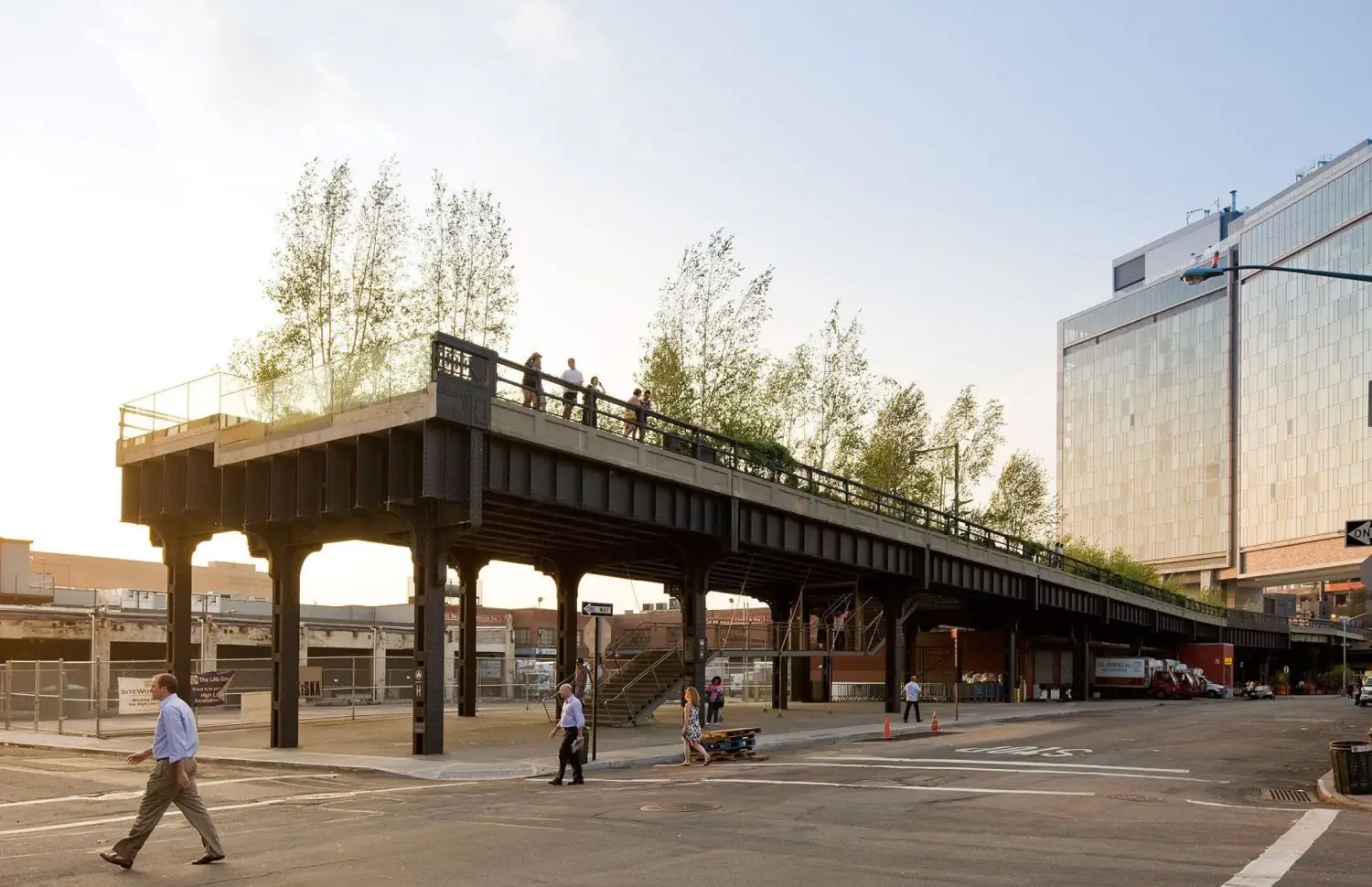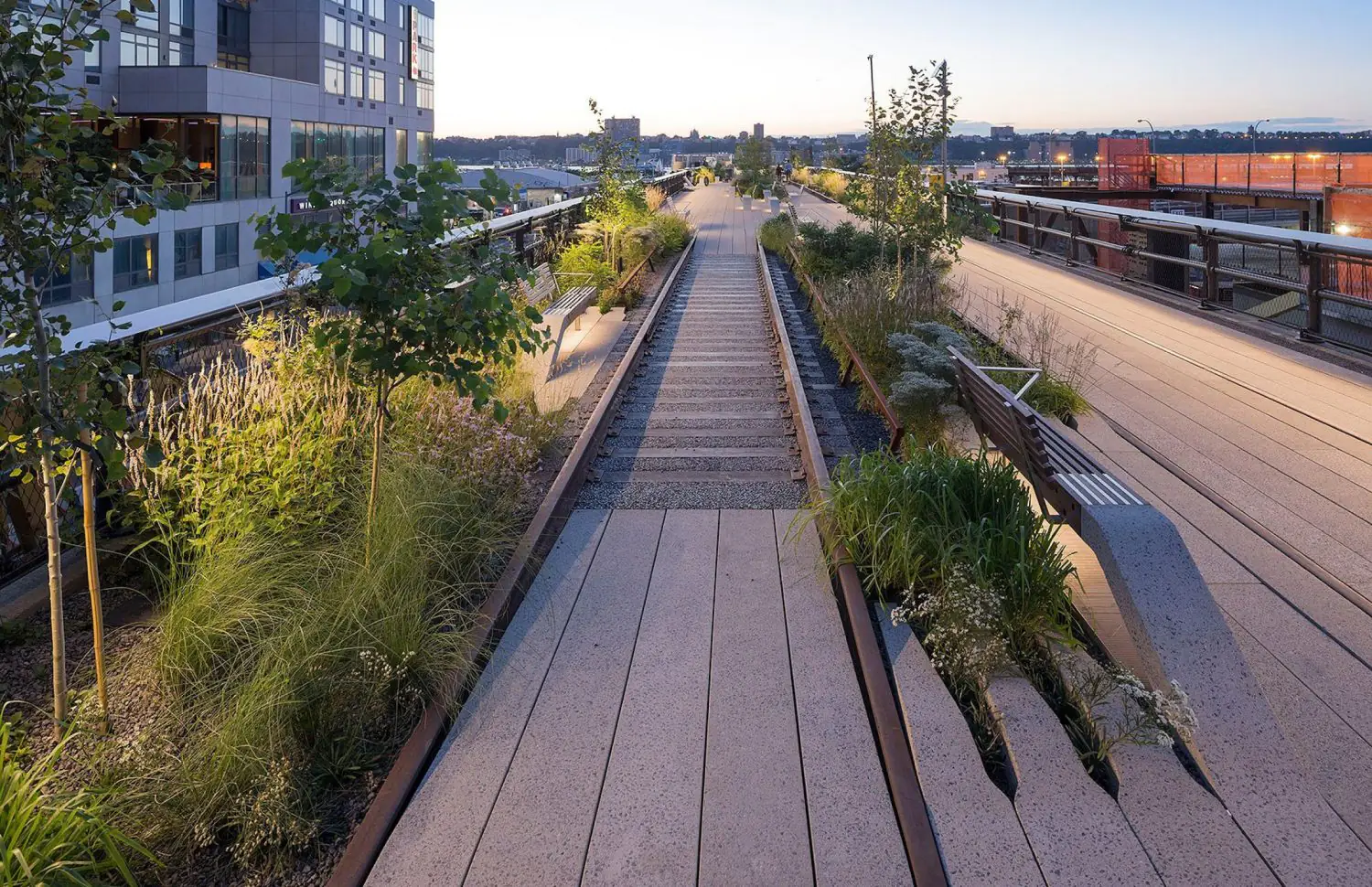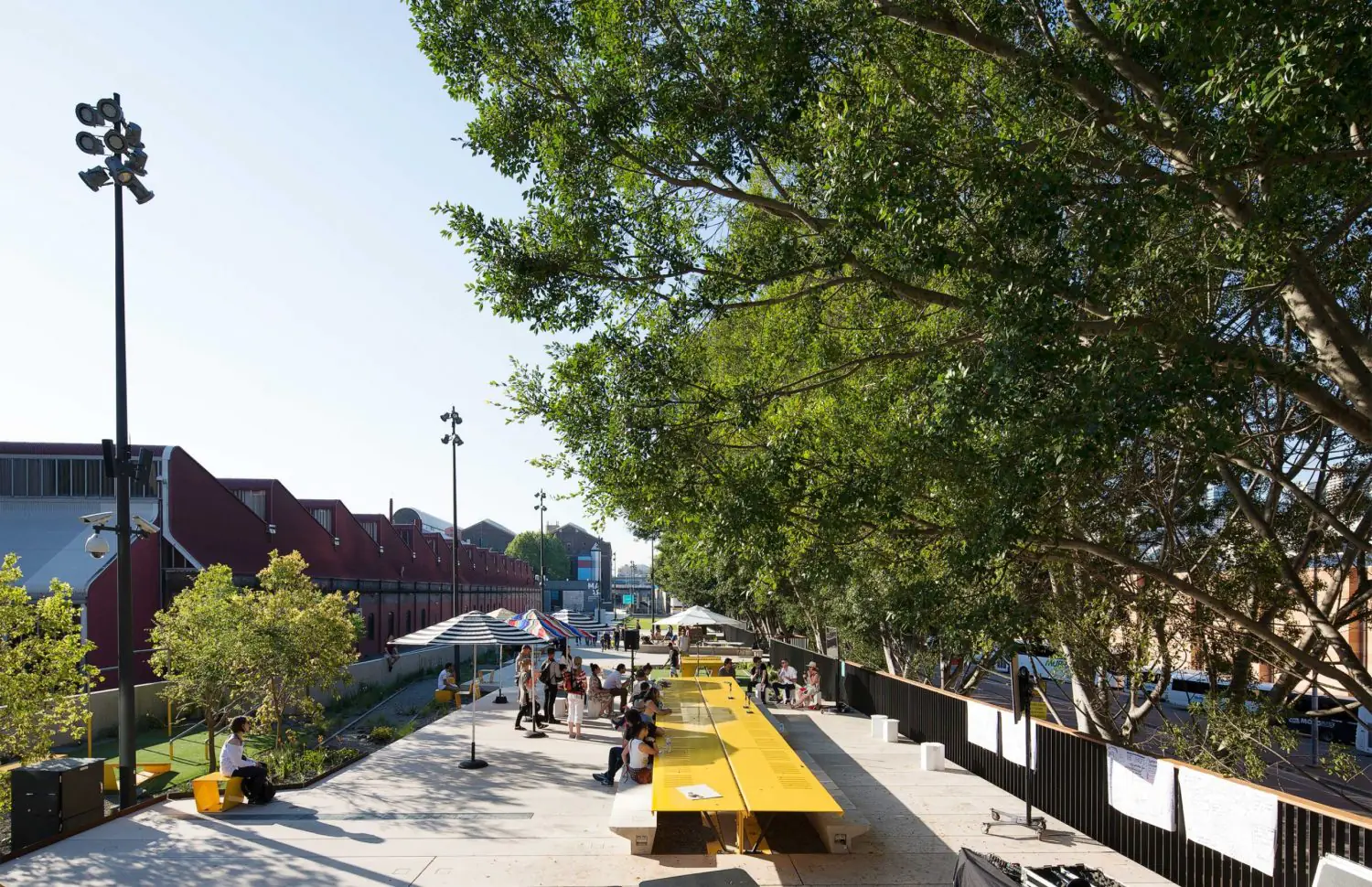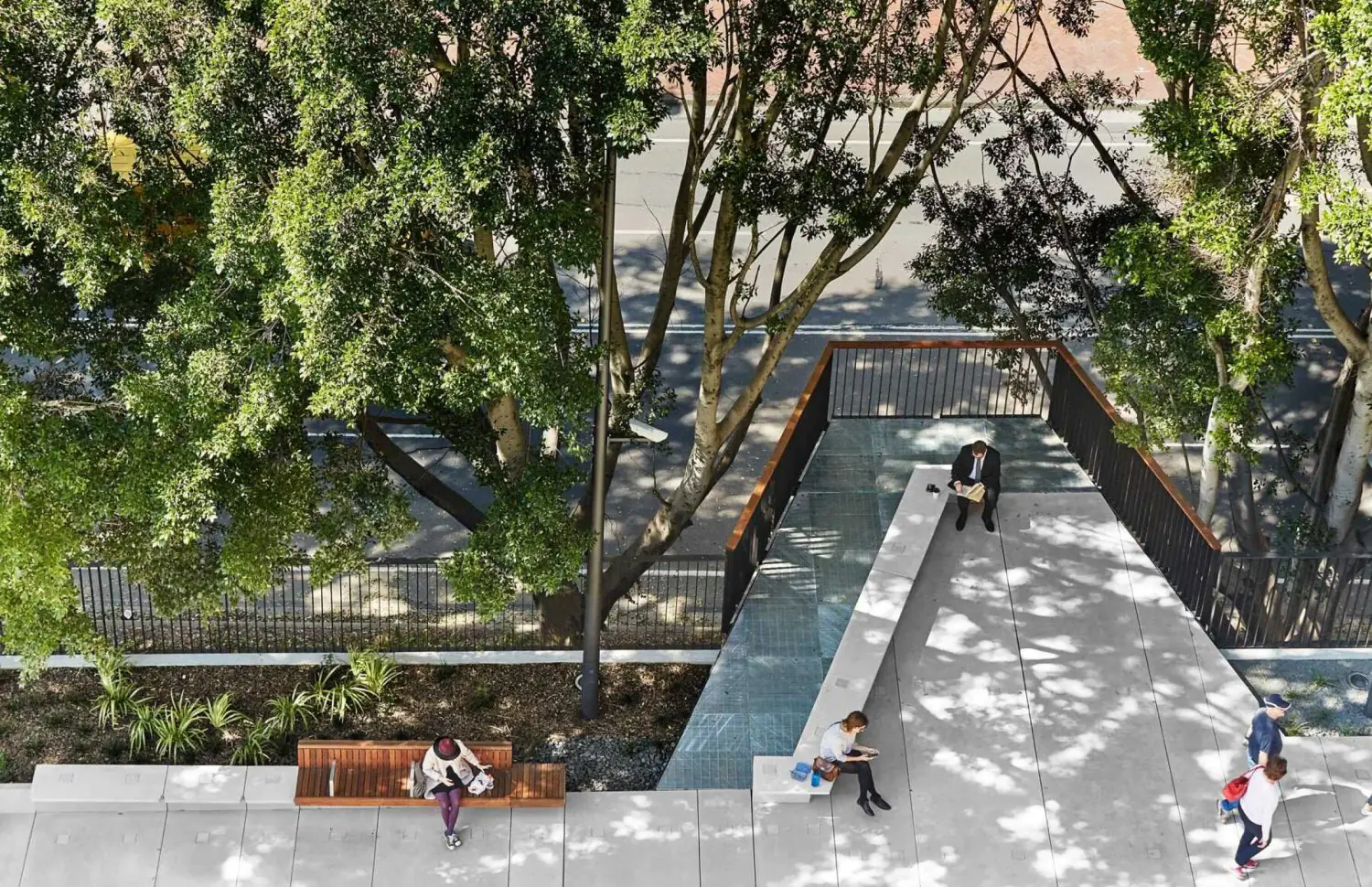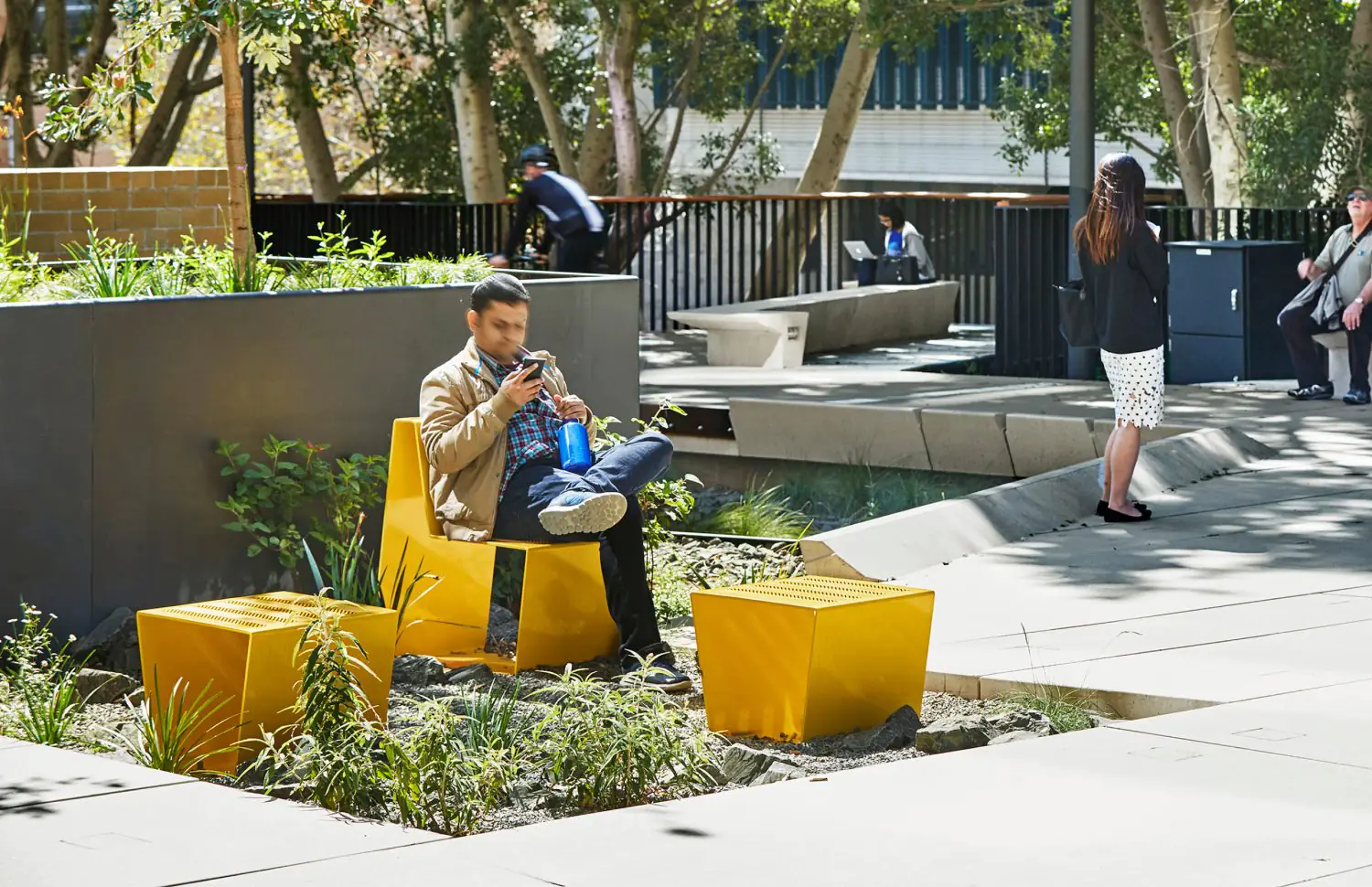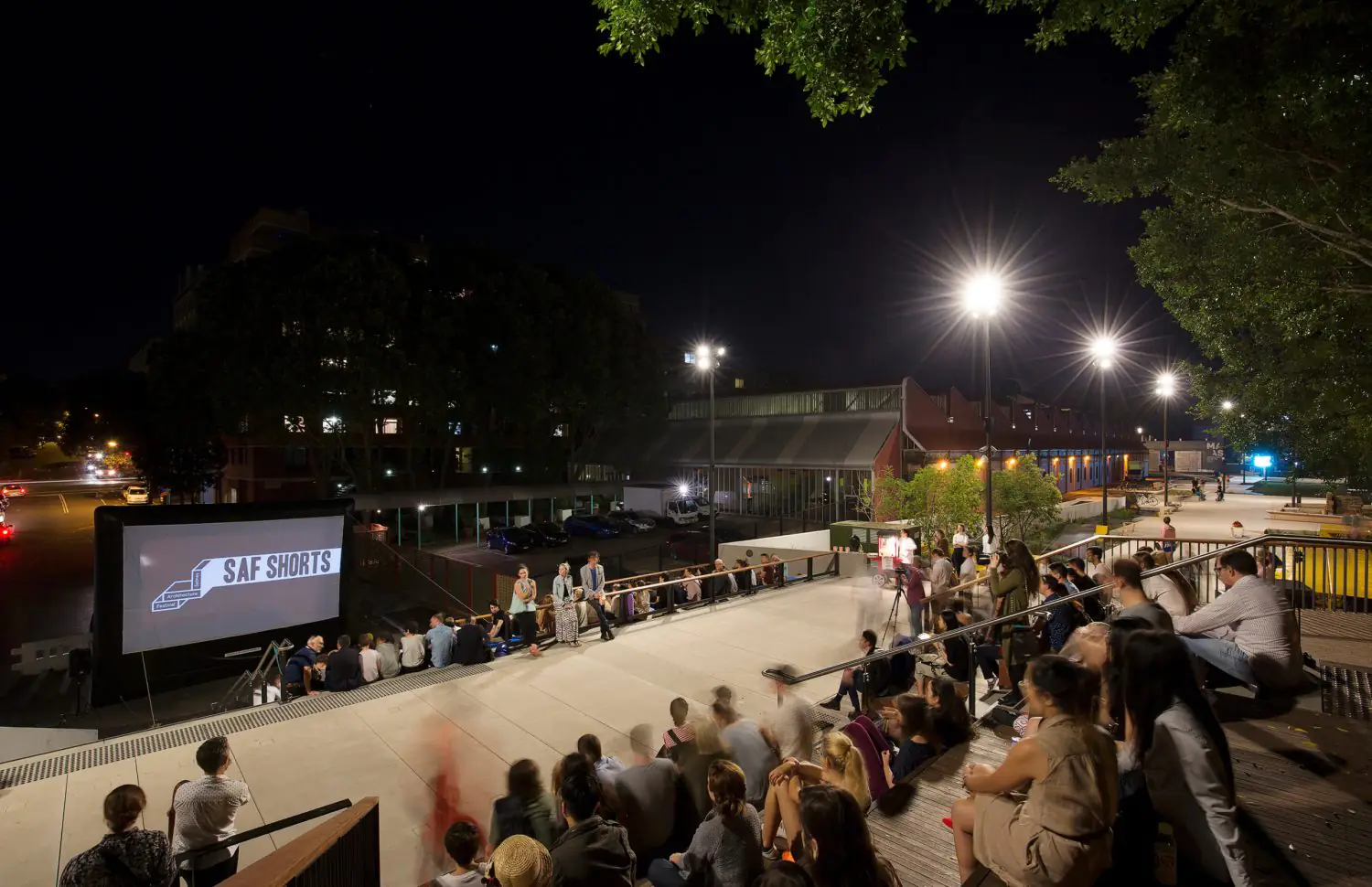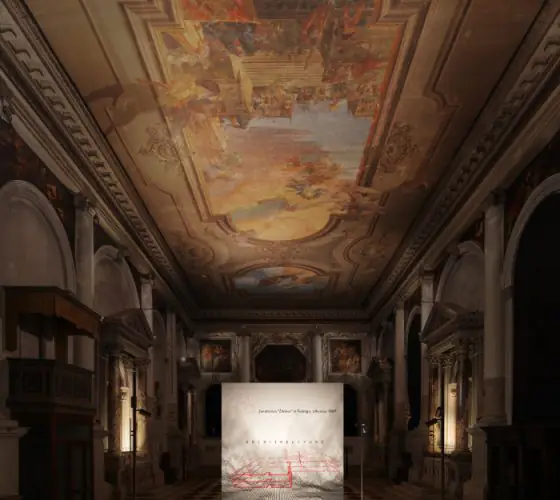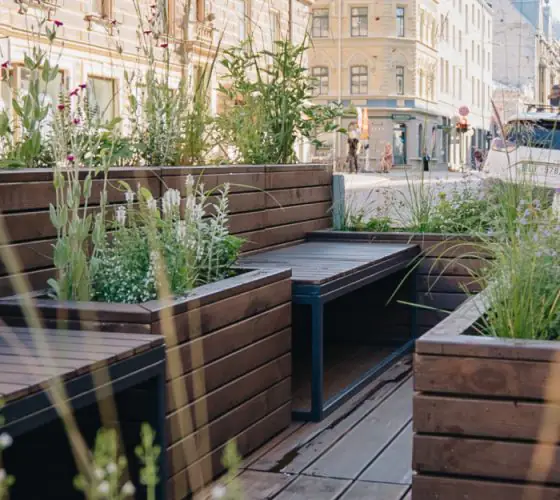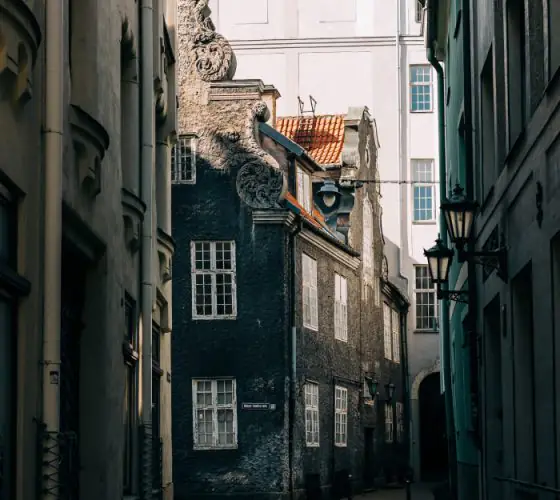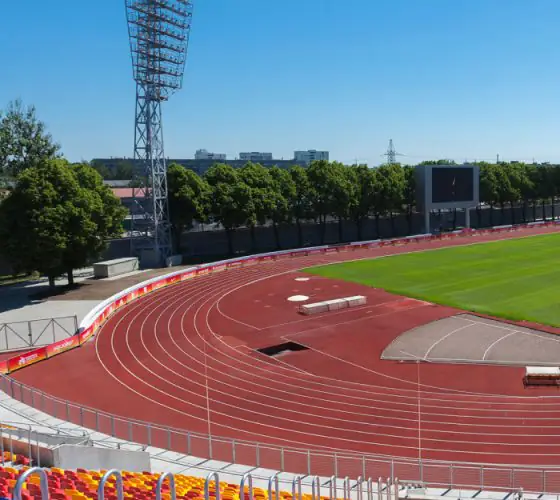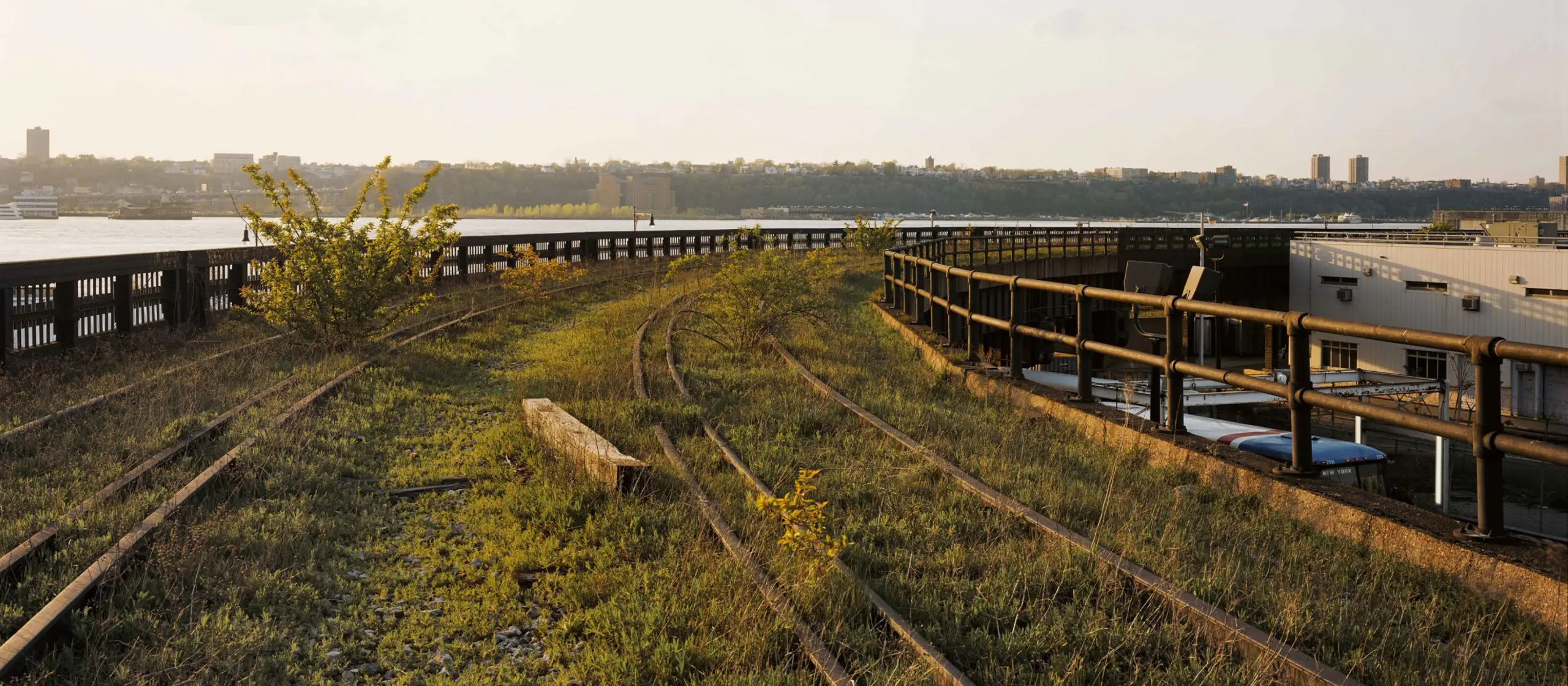
Photo: Joel Sternfeld
joelsternfeld.net
Within our previous articles, we have focused on industrial heritage that has been renewed or found a new purpose such as water towers or railway stations. Such buildings occupy important places in cities—often located in or near the center of the city—so discussions around them are of increasing public interest.
But industrial heritage can also be much more utilitarian: for example, railroad tracks, which often cut through urban development quite aggressively (for example in the case of Riga) or deforested large areas in rural areas.
The easiest solution once a railway route is no longer profitable is to dismantle the tracks and sell them for scraps. Yet the footprint left behind the tracks can be seen for decades to come. Another more productive way is to adapt railroad tracks for new uses. These are the cases we will consider in the text.
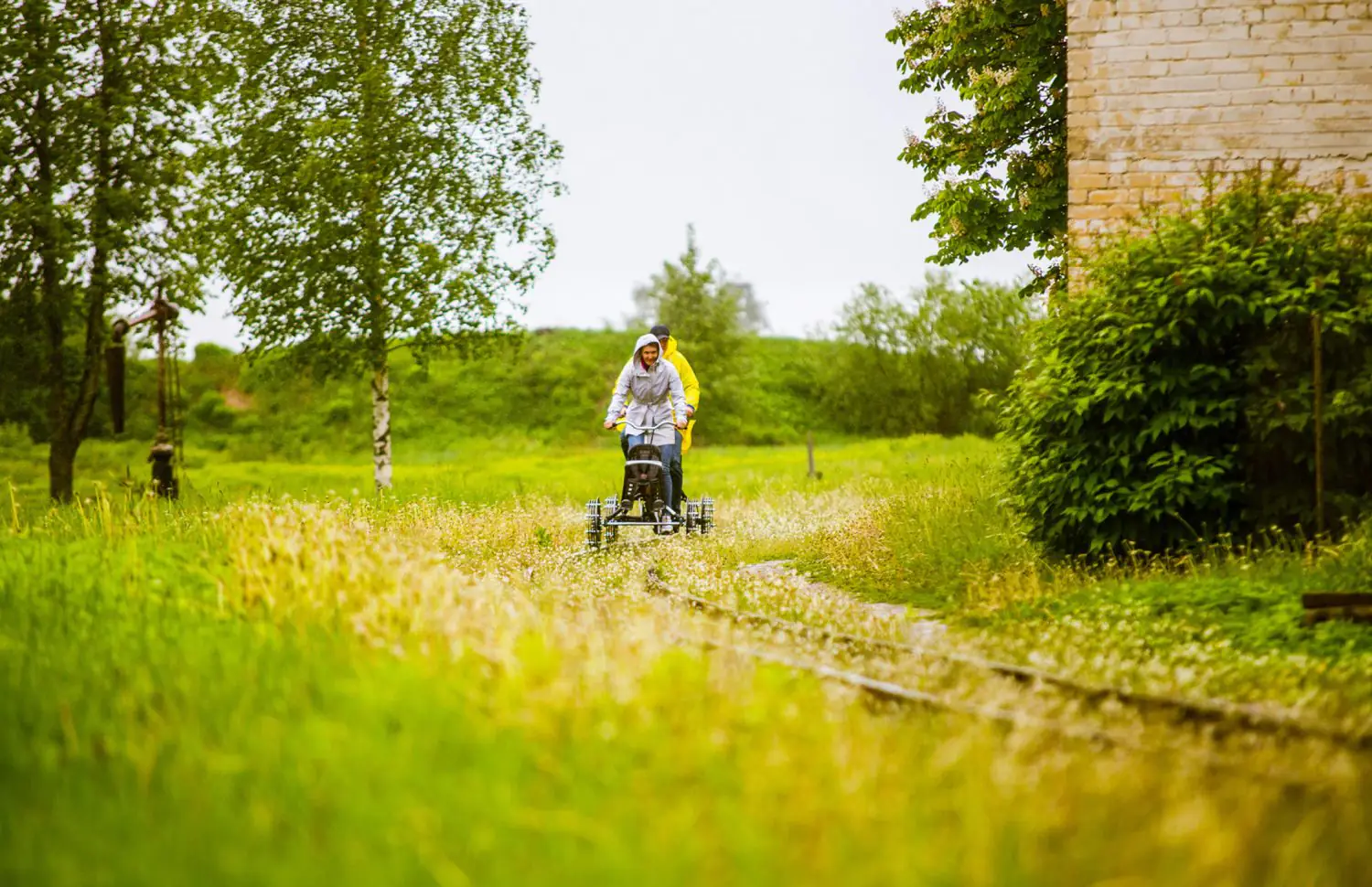
greenrailways.eu
Walking routes
“Green Railways”
Even when tracks on old railroad routes are dismantled, traces of them remain: deforested paths, bridges and viaducts, water towers and other supporting infrastructure that is left scattered along the directions the trains were traveling. Municipalities that have to deal with this crumbling heritage often look at it as a disadvantage, but it can also be seen as an advantage to develop new tourism and recreational activities for the locals.
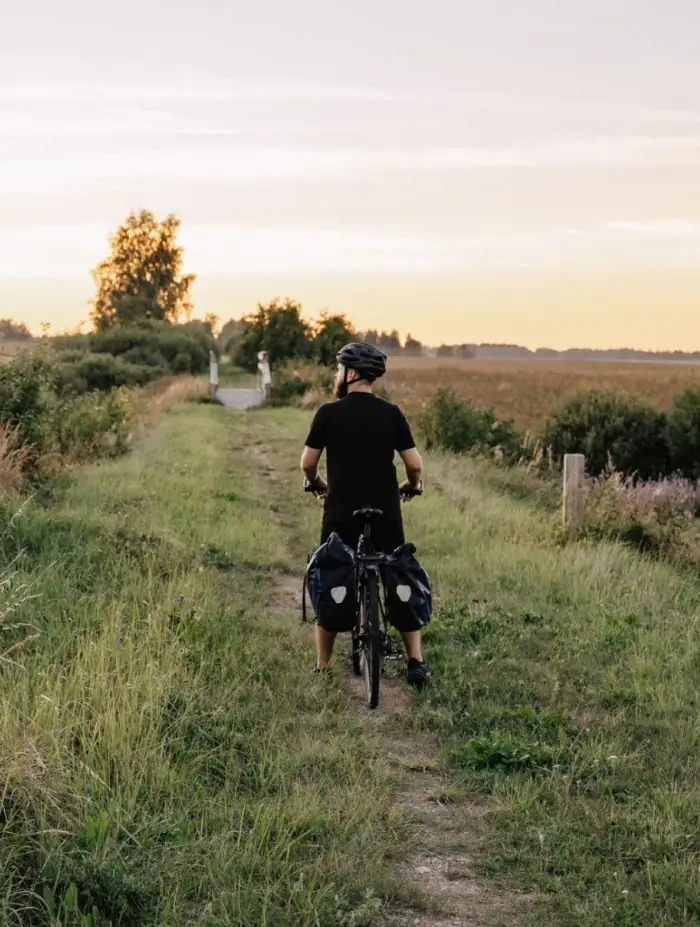
visit.valmiera.lv
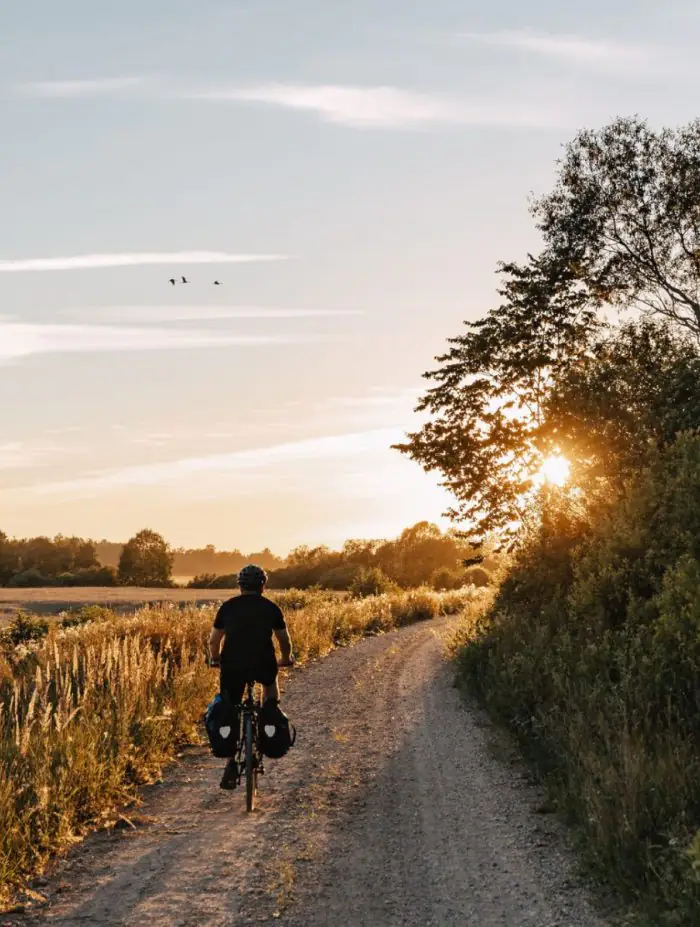
visit.valmiera.lv
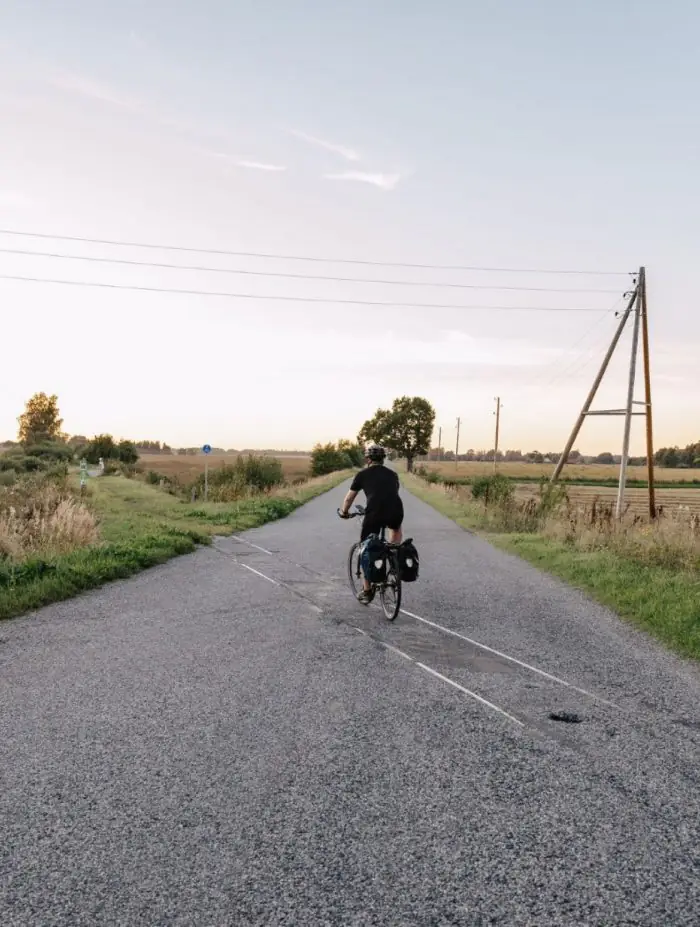
visit.valmiera.lv
“Green Railways” is a joint initiative between Latvia and Estonia to help develop and popularize old railway routes as walking and biking paths. The project has mapped out the former tracks and marked points of interests for travelers.
Different length and difficulty routes are available, the paths have been marked and amenities are available for travelers. For example, the route Smiltene–Valmiera–Ainaži spans an impressive 130 km. Most of the path is covered in gravel therefore it is suitable for the more experienced bikers. Throughout the path, bikers can discover the old railway stations, bridges and the serene nature of Vidzeme region. Parts of the path are adapted as a long distance skiing path during the winter months.
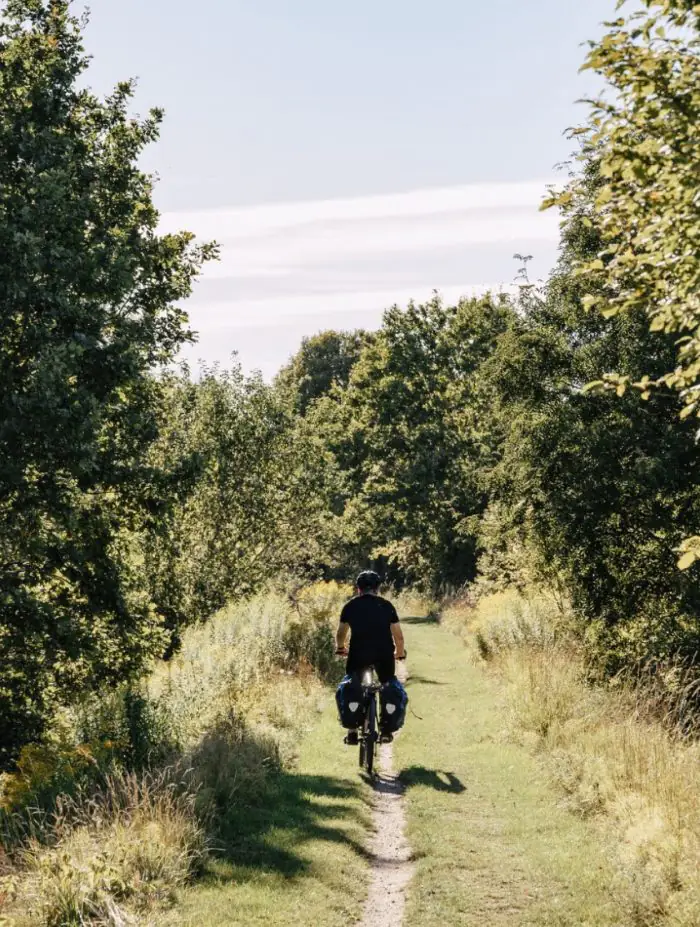
visit.valmiera.lv
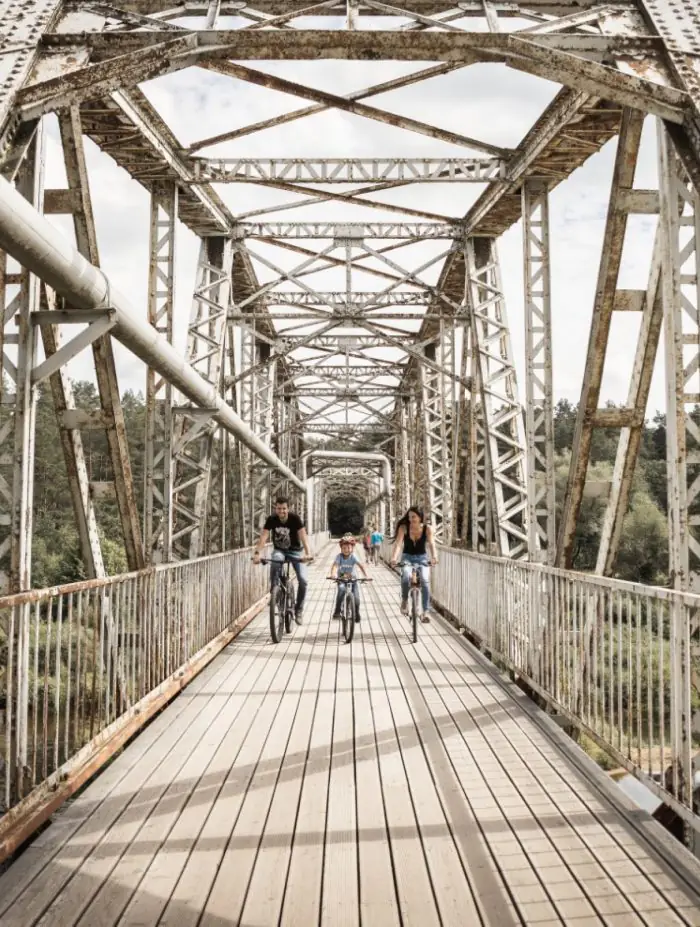
visit.valmiera.lv
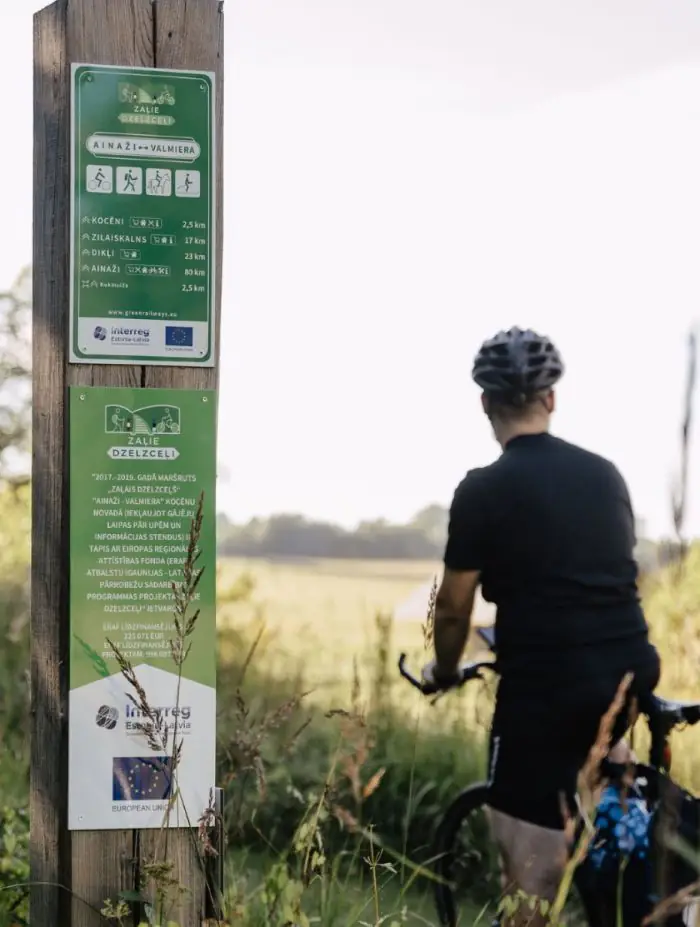
visit.valmiera.lv
For the more adventurous travelers among us the Latvian Railway history museum has mapped all of the rail tracks of Latvia (in use and not active) for those wishing to dive deeper into exploring this heritage.
The “Green Railways” Initiative proves that with relatively small investments these old routes can benefit both visitors and locals alike.
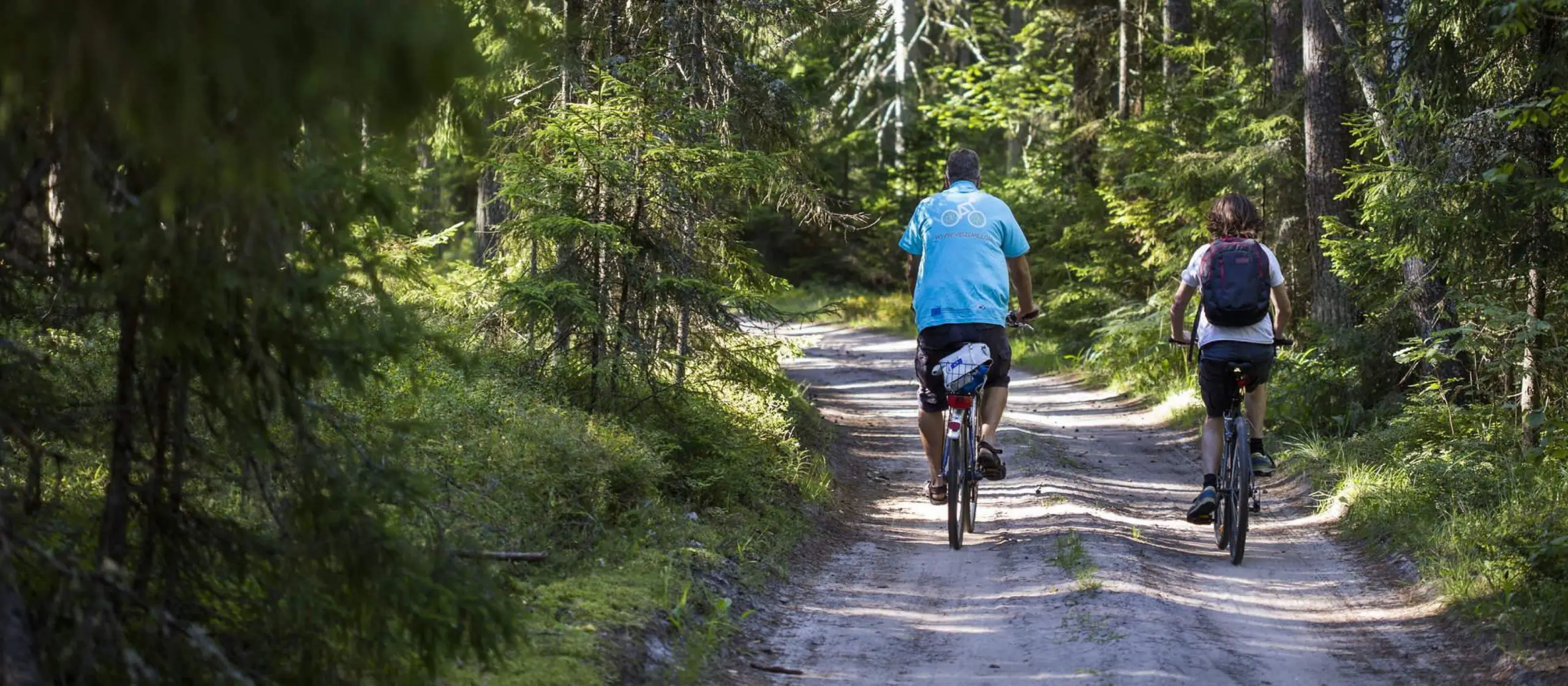
latvia.travel
Chemin des Carrières
The small city of Rosheim in Alsace, France, has gone a step further when developing the old industrial railway route into a bike one. Norwegian architectural firm Reiulf Ramstad Arkitekter have transformed the 11th km long Chemin des Carrières (“Quarries’ Track”) into a story told via elements of landscape architecture.
The metal sculptures offer different panoramic points to let visitors reflect on how nature has slowly taken aback the once industrial territory.
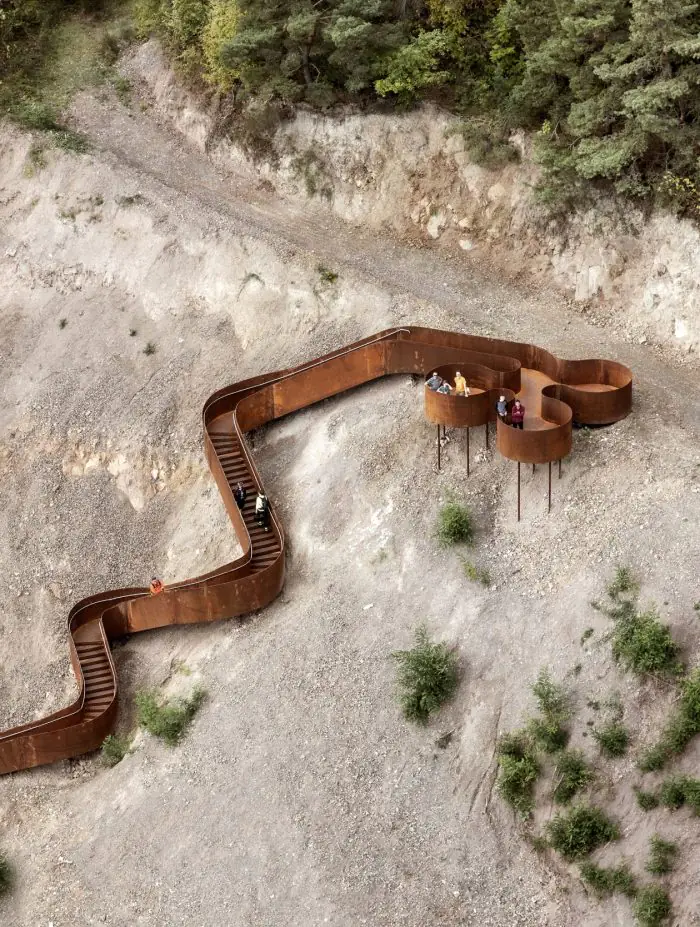
reiulframstadarkitekter.com
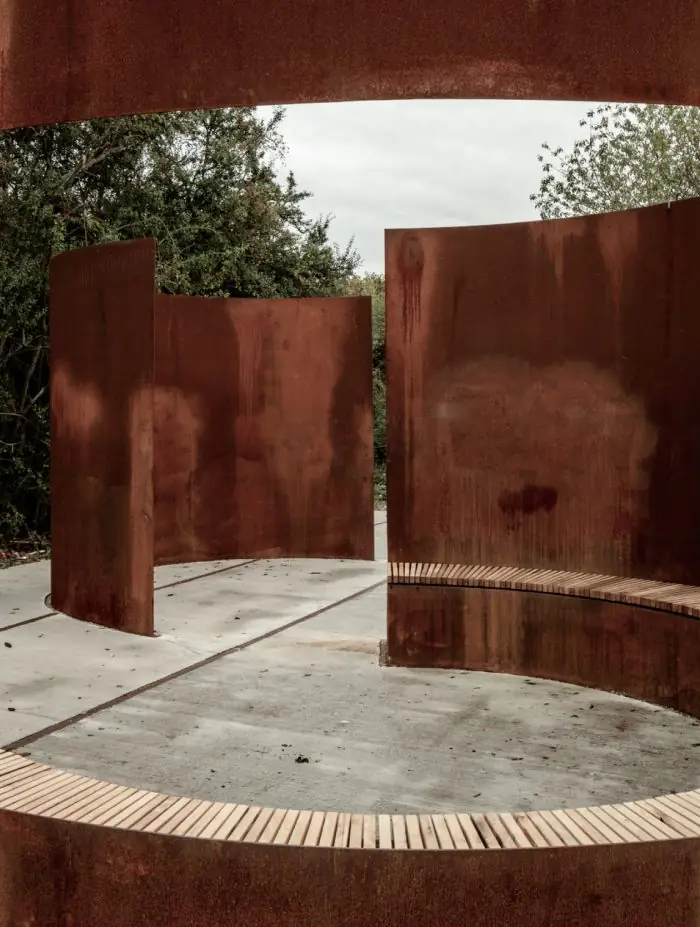
archdaily.com
Paris: the Сase of Petit Ceinture
Abandoned railway tracks are not a problem only within country sides, but often than not they can be found within the very centers of cities. There is an extensive railroad line running through Paris called “Petit Ceinture”, which literally translates to “Little Belt”.
Since the 19th century, this railway line provided easy access to different railway stations and districts of Paris for passengers. But feuds between different transportation companies and the ever expanding public transport options of Paris soon made this railway route unattractive for locals. Once left abandoned, the old stations and rail tracks quickly fell into disrepair. In some places, the rails were originally designed and built to be lower than the street level, bed, and they soon became popular among the homeless to hide from the weather and shield their community.
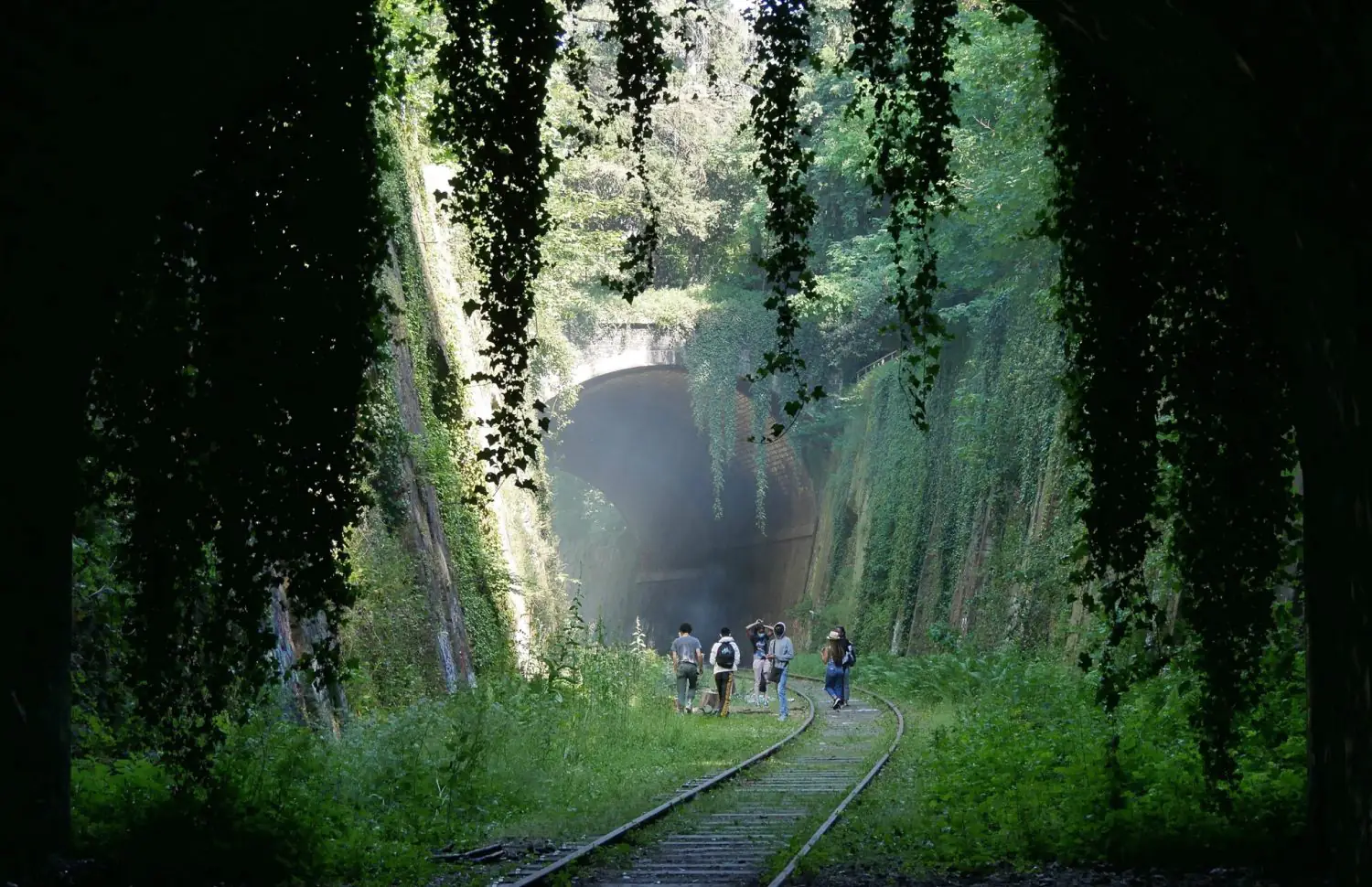
facebook.com/PromeneursPC
To tackle this problem, Paris city council and National Company of the French Railways (Société nationale des chemins de fer français or SNCF) made a plan in 2015 to revitalize the area. Parts of the former route are now available to the public: pedestrian and bicycle routes and guides have been developed to make them easy to use. Local businesses and communities have also done their part in making the former track more accessible and appealing. Starting from 2010, next to the former Ornano boulevard station, shared gardens have been set in place. The station itself has been transformed into a bar and a cafe La REcylerie that offers workshops on recycling and sustainable living.
The route is of impressive scale, almost 40% of it is underground, therefore its full redevelopment will still be a long venture. But the activity of the municipality, a large company and local entrepreneurs helped to bring a significant area back into the urban fabric and and the daily lives of Parisians.
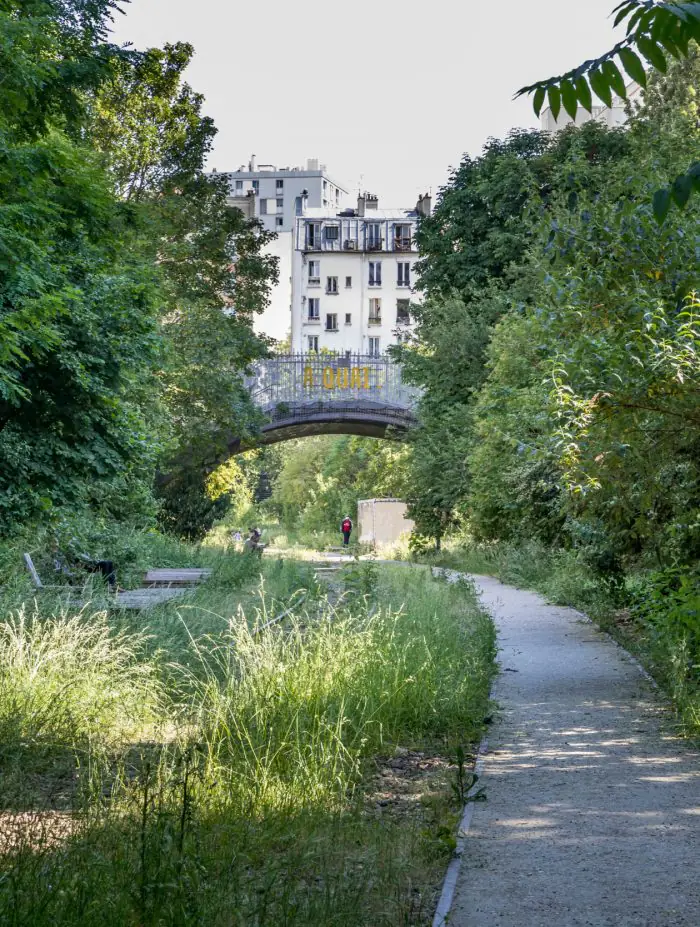
adobestock.com
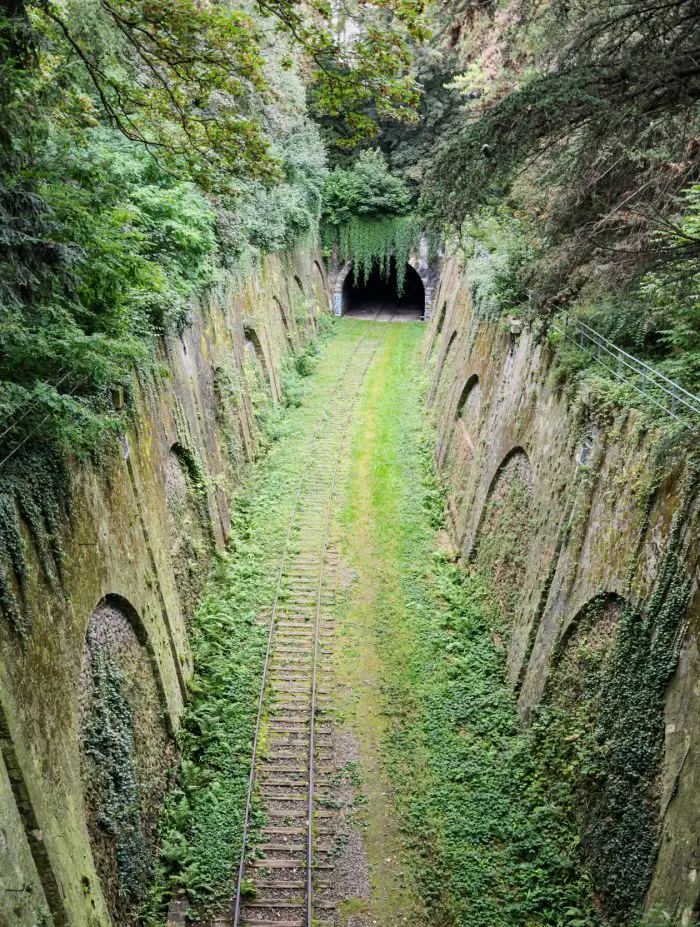
wikimedia.org
Both the cases of Latvia with small investments or larger scale projects such as the one in France prove that transforming these routes can revitalize local identity or create a new, contemporary one for the community.

Photo: Iwan Baan
thehighline.org
Railroads into Parks
Coulée Verte
As mentioned in the previous example, some of the abandoned railways can be found underground. Paris is also home to many elevated railway lines that are held on impressive viaducts. Abandoned and active viaducts are delightful, but there can be big problems with their maintenance.
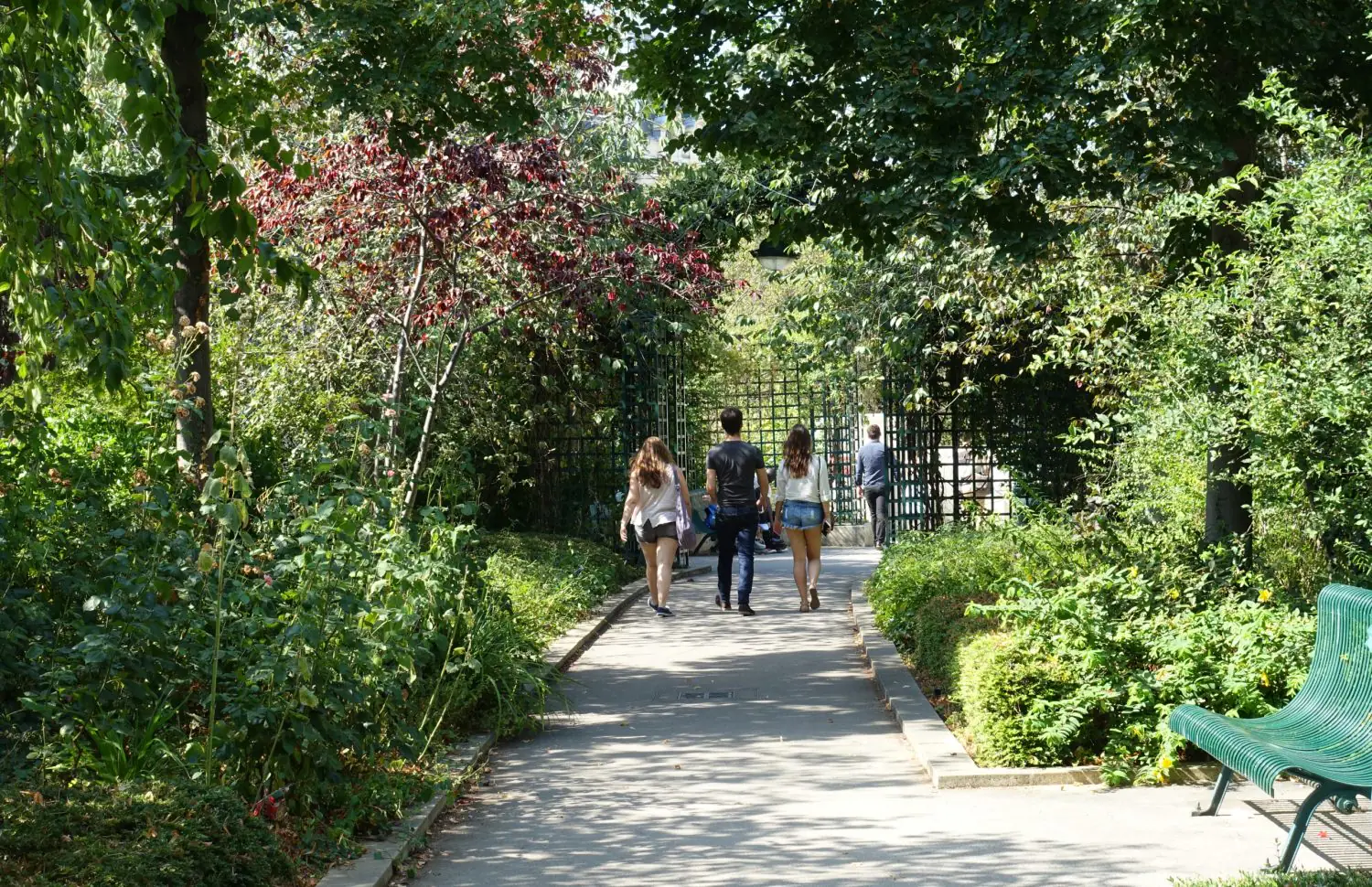
wikipedia.org
The Coulée Verte viaduct, known as the Promenade Plantée, is one of the first examples of urban renewal through the reprogramming of lifted railway tracks. A viaduct in the heart of Paris with the railroad out of use has been transformed into a lush green space stretching nearly 4 kilometers across the 12th arrondissement.
The relaunch of the Coulée Verte as a public space in 1993 marked a visionary approach to urban regeneration, inspiring similar projects worldwide, including New York City’s High Line.
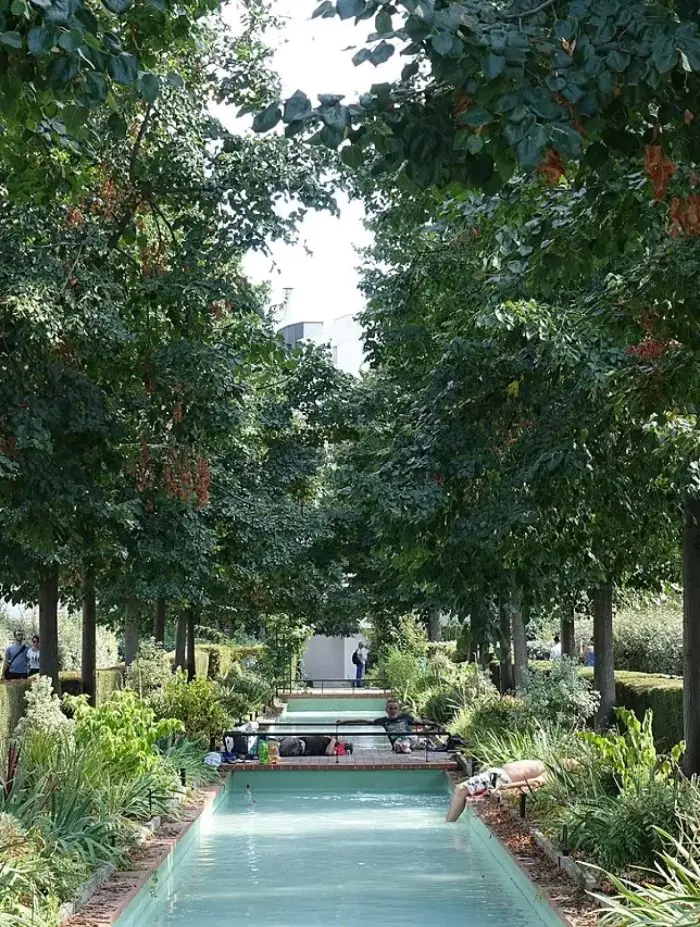
wonderlicious.blog
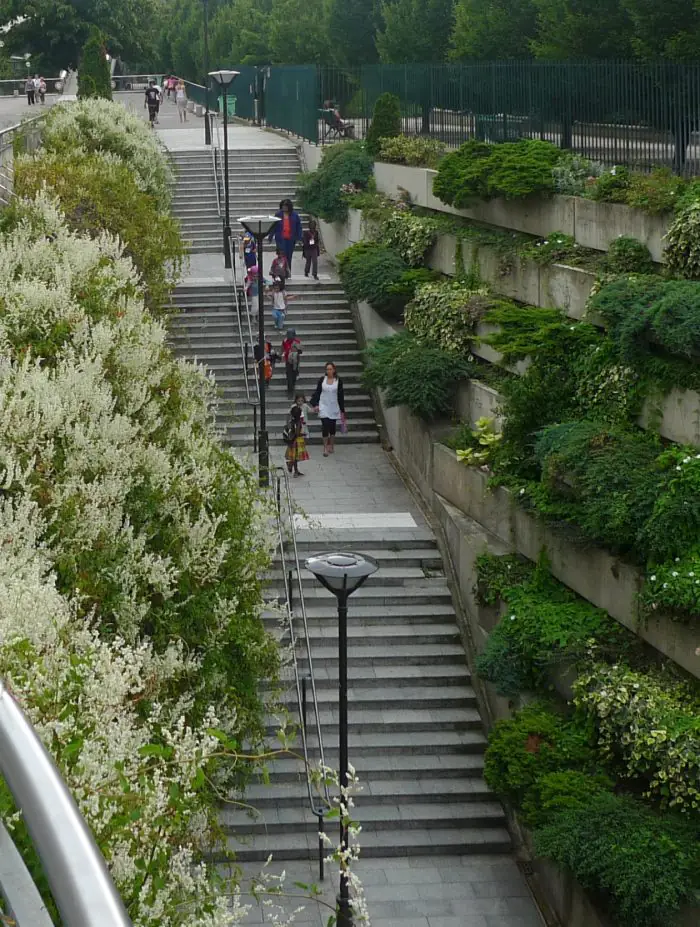
wikimedia.org
High Line
Like the railroad in Paris, New York’s High Line was for a period of time left abandoned. Originally built in the 1930s as a freight rail line elevated above Manhattan’s West Side, the High Line fell into disuse in the 1980s. An important feature of this railway line is its modern movement character: the transportation artery, raised above the ground by several floors, embodies utopian ideas about the division of different urban functions by levels.
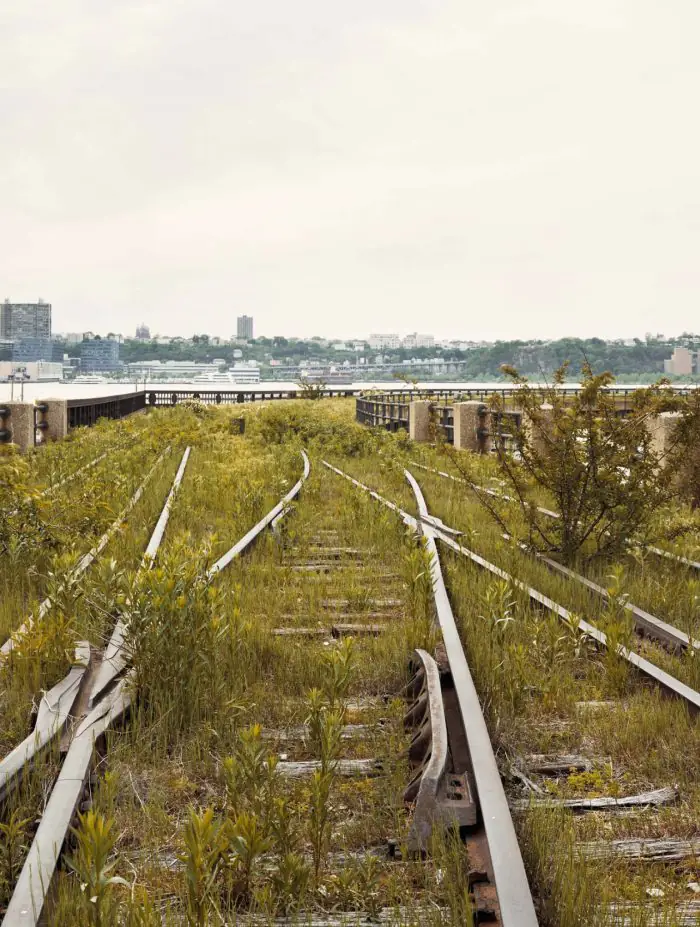
Photo: Joel Sternfeld
joelsternfeld.net
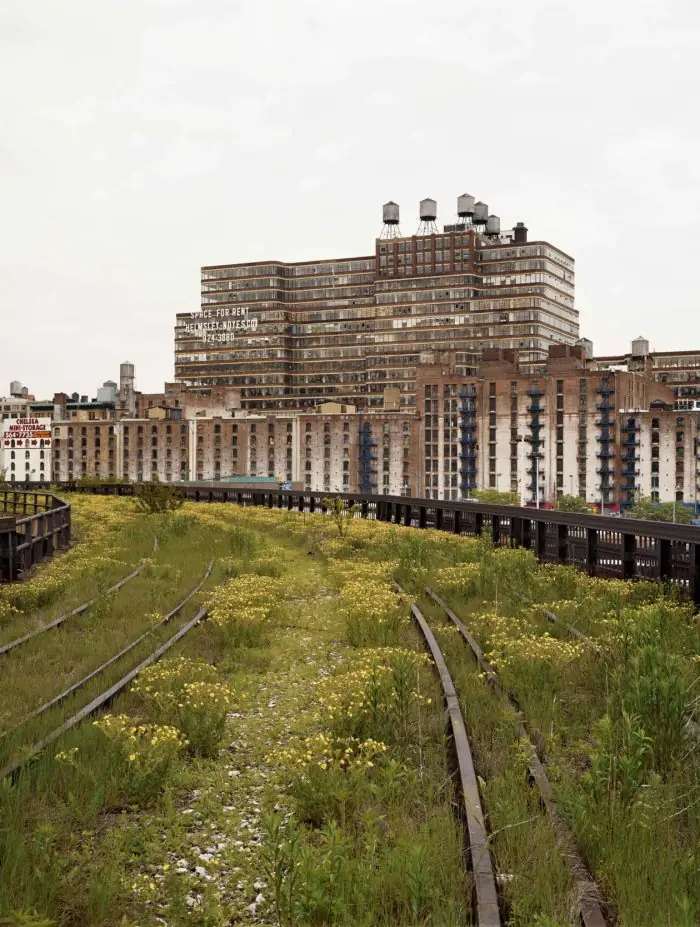
Photo: Joel Sternfeld
joelsternfeld.net
However, a community-led initiative spearheaded its revitalization, and in 2009, the first section of the park opened to the public. Today, the High Line stretches for 2.3 km, offering a unique elevated perspective of the New York’s bustling streets and skyline. Lush greenery, art installations, and places for social activity create a very lively and rich space at the intersection of nature and urban life. Active citizens continue to develop and shape this area.
The success of both Coulée Verte and High Line inspired countless similar projects like 606 Line in Chicago, BeltLine in Atlanta or the Railway Culture Park in Xiamen, China just to name a few. While our world is becoming increasingly urbanized and polluted, this work with rail lines running through significant urban areas may be one of the most environmentally friendly ways to revitalize the urban fabric.
Goods Line
Sydney’s version of the High Line, The Goods Line, has offered yet another way to incorporate railroads within the city landscape. The example of Sydney is interesting as it serves more of an elevated public square than a park. The Goods Line was an abandoned rail corridor connecting Central Station to the Darling Harbor—and has been transformed into a vibrant linear public space and pedestrian thoroughfare stretching some 500 meters through the heart of the city.
Opened in stages since 2015, this innovative project seamlessly blends green spaces, public art installations, recreational facilities, and pedestrian pathways, creating a dynamic and engaging urban oasis. Lush landscaping featuring native Australian flora softens the industrial remnants of the railway, providing a serene contrast to the surrounding urban landscape.
The Goods Line offers more than just a picturesque stroll; it serves as a multifunctional space for community gatherings, cultural events, and leisure activities. Its design incorporates flexible seating arrangements, performance spaces, and areas for outdoor exhibitions, encouraging social interaction and fostering a sense of community among Sydneysiders. In addition, the park’s location increases the pedestrian walkability of the city: with it came convenient connections between Sydney’s significant locations.
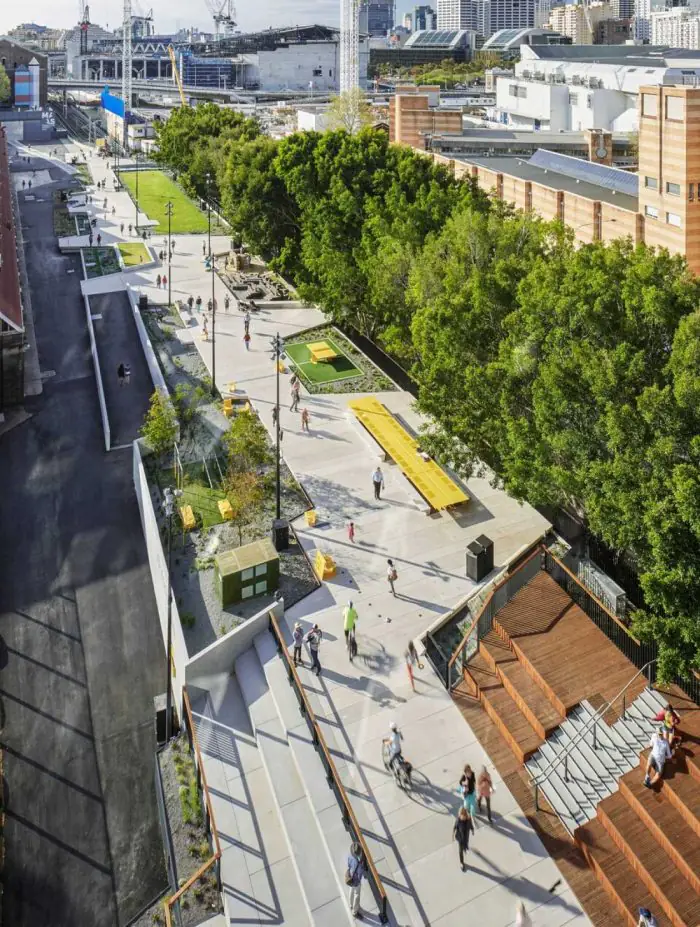
archello.com
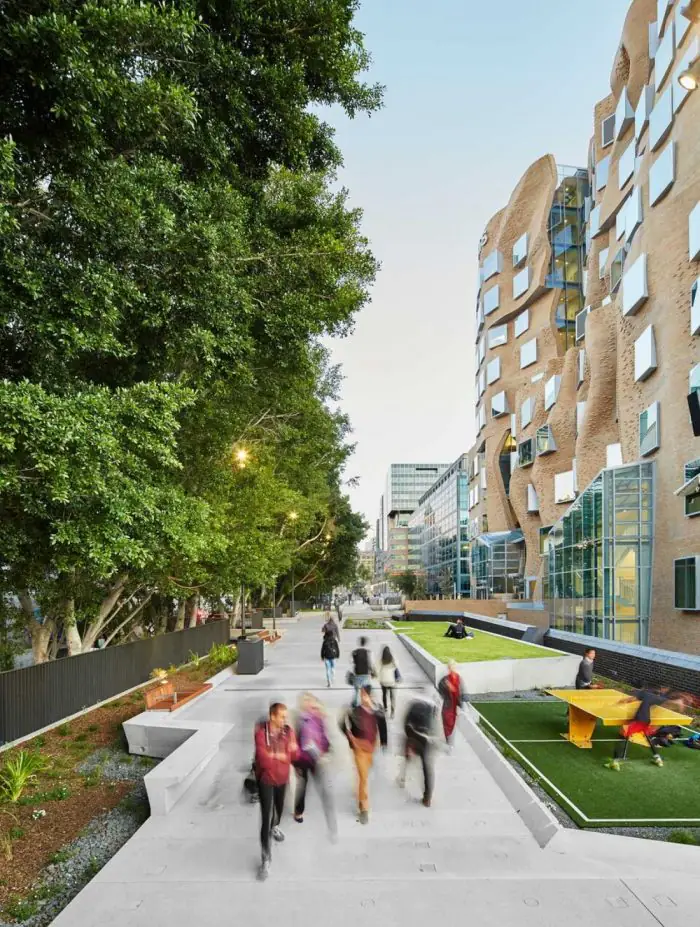
archello.com
Bicycle and pedestrian trails, viewpoints, linear parks, or simply a gathering place for local residents—seemingly unimpressive abandoned rail lines in urban areas have great potential for development and resource conservation that is so important in today’s society. Reusing and infusing existing industrial spaces with new meanings is a truly conscious and sustainable way for urban development.
The careful handling of industrial heritage is changing the thinking of citizens around the world: this approach shows that existing structures do not have to be demolished to be useful—they can be adapted to meet the needs of the modern world.


